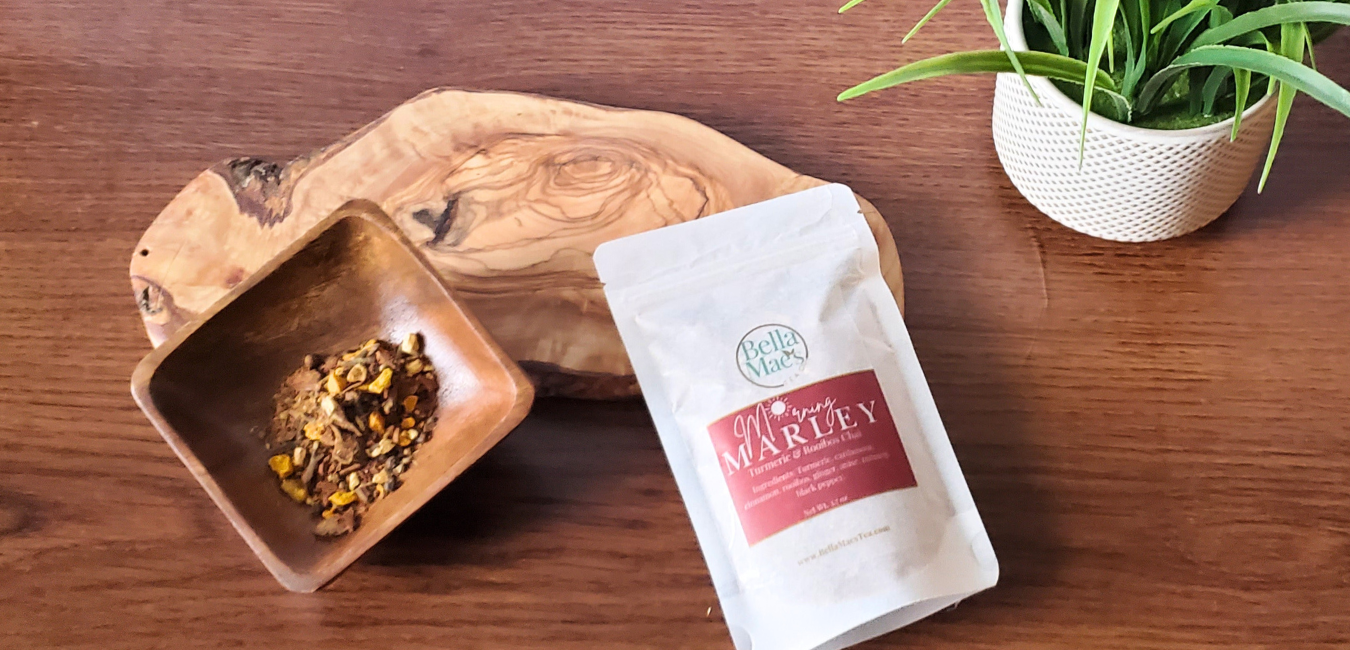I love a good chai, so much so that I created my own Chai blend. This beverage has a history as rich and diverse as its taste. Chai has evolved over centuries, becoming a global phenomenon cherished for its aromatic spices and comforting warmth. In this blog, we will explore the origins, cultural significance, and variations of this beloved drink, and provide you with an easy chai recipe you can make on your own for those much-needed moments.
The Origins of Chai
Chai, which translates to “tea” in Hindi, finds its roots in ancient India, where it was traditionally consumed for its medicinal properties. Legend has it, that a royal king was seeking a solution to prevalent health issues, it was recommended to blend spices with tea leaves and boil them together. Thus, chai was born, a potent elixir that promised vitality and well-being. Over time, chai became ingrained in Indian culture. Chai has served as a unifying force, fostering community and conversation among people of all backgrounds.
Variations of Chai
Today, there are a plethora of chai variations from around the world. Due to cultural preferences, each country may swamp out ingredients to seek the taste they desire. Some of the familiar variations include:
Masala Chai: Perhaps the most iconic rendition of chai, masala chai features a robust blend of black tea, aromatic spices, milk, and sweetener. This comforting brew is synonymous with Indian culture and is enjoyed both hot and cold.
Kashmiri Kahwa: Hailing from the picturesque region of Kashmir, Kahwa is a fragrant green tea infused with saffron, cardamom, cinnamon, and almonds. This light and refreshing brew is often served during special occasions and gatherings.
Thai Iced Tea: A delightful fusion of Thai and Indian flavors, Thai iced tea combines black tea with sweetened condensed milk and spices like star anise and orange blossom water. Served over ice, this vibrant orange-hued beverage is a favorite among tea enthusiasts worldwide.
Yogi Chai: Inspired by the ancient traditions of Ayurveda, Yogi chai features a blend of black tea, spices, and healing herbs like ashwagandha, turmeric, and licorice root. This rejuvenating brew is believed to promote balance and vitality, making it a popular choice among health-conscious consumers.
Over the years, chai has been adapted and reinvented in different parts of the world, each reflecting the unique tastes, traditions, and customs of its respective culture.
- Moroccan Mint Tea: In Morocco, tea holds a special place in social gatherings and hospitality. Moroccan Mint Tea, also known as “Atay,” is a refreshing blend of green tea, fresh mint leaves, and sugar. It’s often poured from great heights into small glasses to create a frothy layer, symbolizing friendship and hospitality.
- Russian Chai (Zavarka): Tea is a staple in Russian culture, and their version of chai, known as “Zavarka,” is strong and robust. It’s made by brewing black tea leaves in a samovar (traditional Russian tea urn) and served piping hot with lemon, sugar, or jam. Russians often enjoy chai with sweets like pastries or cookies.
- Yemeni Chai: Yemeni Chai, also called “Shahi Haleeb,” is a luxurious blend of black tea, spices, and condensed milk. It’s brewed slowly over low heat, allowing the flavors to meld and intensify. Yemeni Chai is often flavored with cardamom, cloves, and ginger, creating a fragrant and indulgent beverage.
- Japanese Hojicha Latte: While Japan is known for its green tea culture, Hojicha Latte has emerged as a popular variation of chai. Hojicha is a roasted green tea with a nutty flavor and low caffeine content. When combined with steamed milk and sweetener, it creates a comforting and creamy beverage that’s perfect for chilly days.
- Turkish Chai (Çay): Tea holds a special place in Turkish culture, where it’s consumed throughout the day. Turkish Chai, or “Çay,” is brewed in a double-stacked teapot called a “çaydanlık” using black tea leaves and water. It’s served piping hot in small tulip-shaped glasses and often accompanied by sugar cubes or traditional Turkish sweets.
Chai continues to captivate and inspire tea lovers around the world (including me). Whether enjoyed as your morning routine or afternoon pick-me-up, chai transcends borders and cultures. Let’s raise our mugs to the legacy of chai. Don’t forget to check out Bella Mae’s version of a chai, Morning Marley. If you like turmeric, you will love it!
Happy Sipping!
A Morning Marley Chai
- 1.5 tsp. of Morning Marley
- 1.5 cup almond milk
- 1/4 cup water
- Sweetener of choice
- Vanilla
- Cinnamon
Add Morning Marley, almond milk, and water to a saucepan and bring to a boil. Once boiled, strain blend in mug, add a dash of vanilla, and sweeten to your desired taste. Mix well. Top with a sprinkle of cinnamon.

